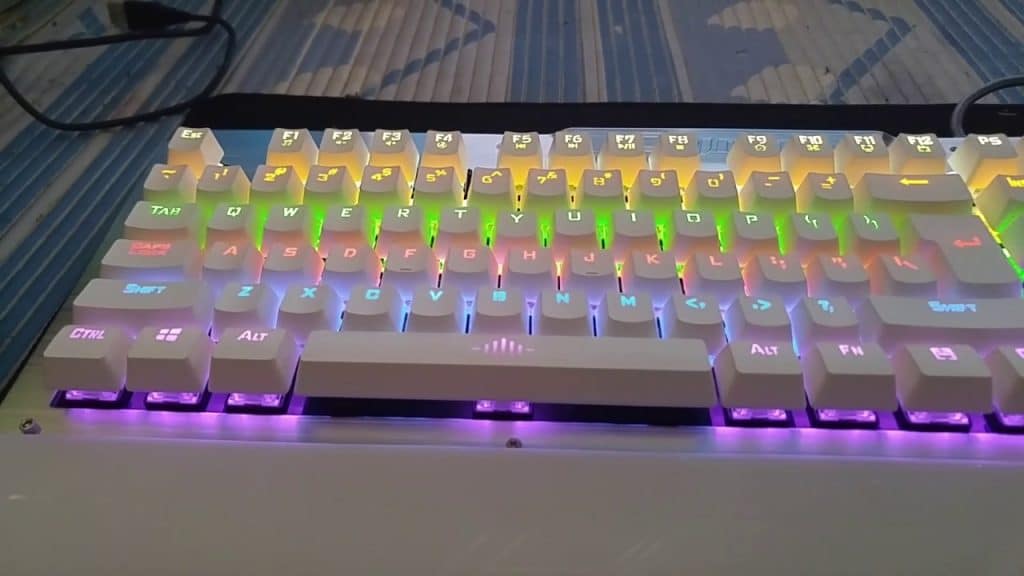Introduction
In the world of mechanical keyboards, enthusiasts often debate over the choice between linear and tactile switches. These two popular types of switches offer distinct typing experiences, making them a critical consideration for anyone looking to invest in a new keyboard. In this article, we’ll delve into the differences between linear and tactile switch keyboards, exploring their unique characteristics, advantages, and disadvantages to help you make an informed decision.
Understanding Mechanical Switches
Before we dive into the specifics of linear and tactile switches, let’s briefly cover what mechanical switches are. Mechanical switches are the individual components under each keycap of a mechanical keyboard. When a key is pressed, these switches register the input, allowing it to be typed on the computer screen.
Now, let’s take a closer look at the two main types of mechanical switches: linear and tactile.
- Linear Switch Keyboards
Linear switches keyboard are known for their smooth and consistent keystrokes. When you press a key on a linear switch keyboard, the force required remains constant throughout the entire keypress, making them popular among gamers and fast typists. The keypress feels like a straight line, hence the name “linear.”
Advantages of Linear Switch Keyboards:
- Consistency: Linear switches provide a consistent actuation force, which can be great for gaming and typing, as it eliminates the tactile bump and click that can sometimes slow down keystrokes.
- Minimal Noise: Linear switches are quieter compared to tactile and clicky switches, which can be beneficial in quiet office environments or when sharing a space with others.
- Faster Typing Speed: The lack of tactile feedback and audible clicks allows for faster typing speeds, as there’s less resistance and distraction.
Disadvantages of Linear Switch Keyboards:
- Reduced Typing Feedback: Some users find that the absence of tactile feedback makes it easier to make typing mistakes, as there’s no physical indication of the keypress registering.
- Less Suitable for Typists: If you prefer a keyboard with noticeable feedback, you may find linear switches less satisfying for extended typing sessions.
- Tactile Switch Keyboards
Tactile switches, on the other hand, provide noticeable feedback when the key actuates. This feedback occurs through a slight bump in the keypress, allowing typists to know when a key has been successfully activated. Tactile switches are favored by many typists for their reassuring feedback.
Advantages of Tactile Switch Keyboards:
- Feedback: The tactile bump provides a clear indication of when a key has been actuated, reducing typing errors.
- Comfort: The feedback from tactile switches can reduce typing fatigue during long typing sessions.
- Versatility: Tactile switches strike a balance between typing and gaming, making them suitable for a wide range of tasks.
Disadvantages of Tactile Switch Keyboards:
- Slower Typing Speed: The tactile bump can slow down typing for some users, especially if they’re accustomed to linear switches.
- Audible Click: Some tactile switches also produce an audible click, which may be disruptive in quiet environments.
Choosing the Right Keyboard for You
The choice between linear and tactile switch keyboards ultimately depends on your personal preferences and intended use.
If you prioritize speed and don’t mind the absence of tactile feedback, a linear switch keyboard may be the best fit for you. Gamers often prefer linear switches for their rapid response and consistency.
Conversely, if you prefer a keyboard that offers clear feedback and a more typewriter-like experience, a tactile switch keyboard is likely a better choice. Tactile switches are ideal for those who do a lot of typing, such as writers and programmers.
In conclusion, both linear and tactile switch keyboards have their own strengths and weaknesses. Your decision should be based on your typing style, whether you prioritize speed or feedback, and the environment in which you’ll be using the keyboard. Ultimately, there is no one-size-fits-all answer, and the best keyboard for you is the one that aligns with your preferences and needs.



